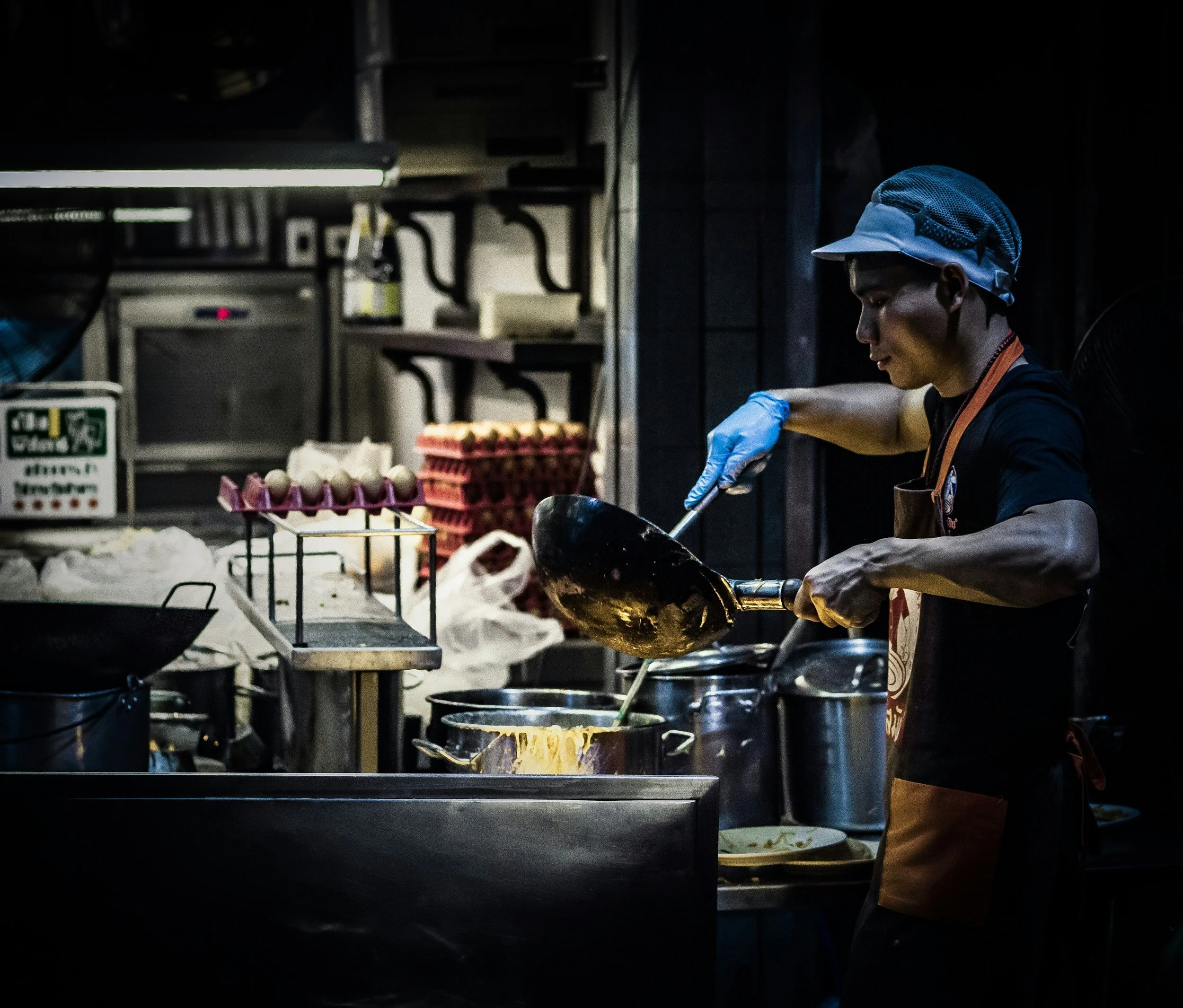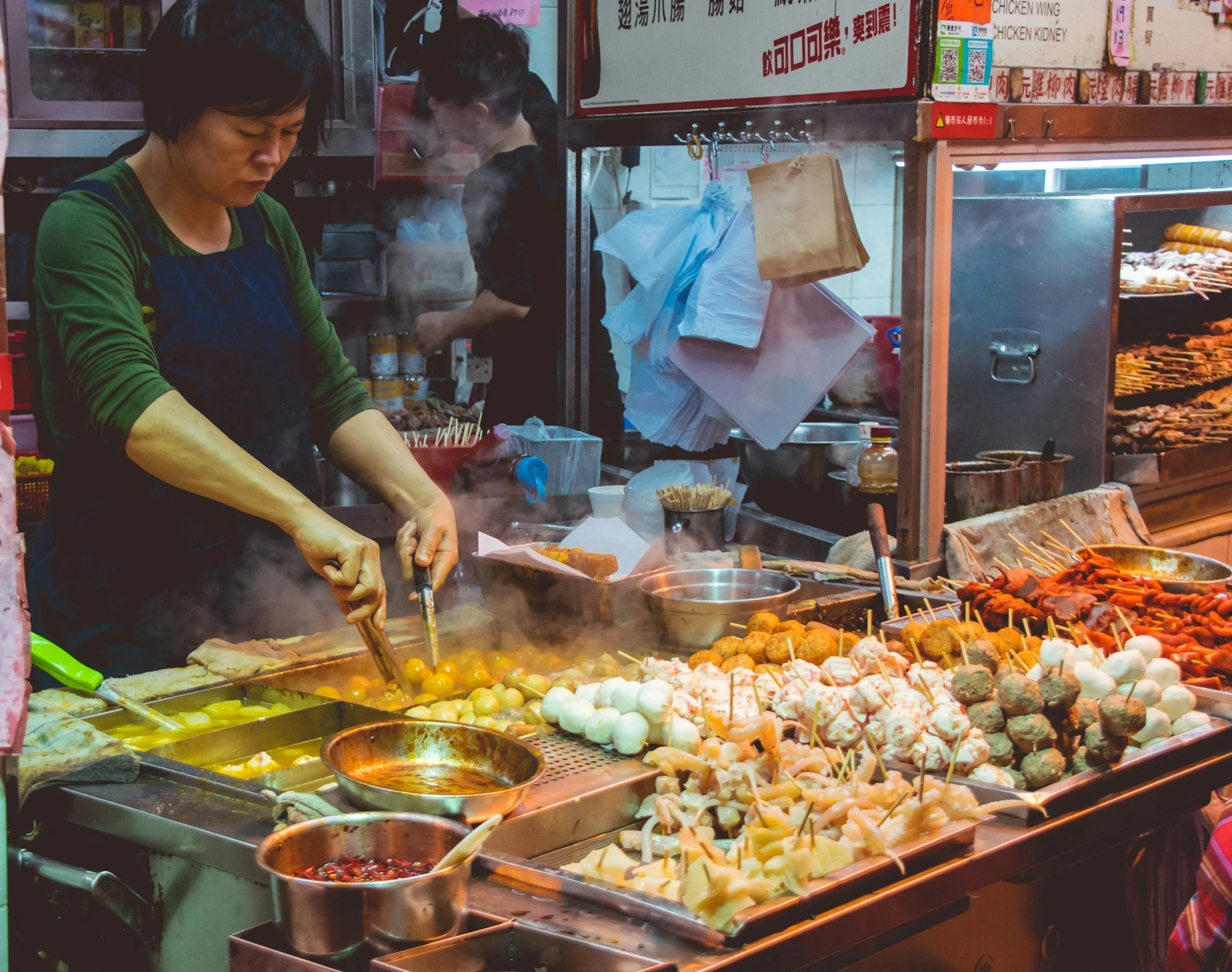All You Need to Know About Thai Food
If the gods of gastronomy were to throw a dinner party, I’m fairly sure the Thai kitchen would be responsible for the menu—a fever dream of lime leaves, chili heat, fermented funk, and coconut calm. Eating in Thailand isn’t just a way to refuel. It’s a full-contact sport, a ritual, a social glue, and occasionally a dare.
Caption: thai street food is a reason alone to travel to Thailand .
The History (A Long, Delicious Tug-of-War)
Thai cuisine didn’t just pop out of a wok one day. It’s the edible offspring of centuries of cultural collisions. Indian spices, Chinese noodles, Portuguese sweets, and Malaysian curries all elbowed their way into Thai kitchens and politely stayed forever. What we call "Thai food" today is really a meticulously curated collage, a triumph of balance where sweet, salty, sour, spicy, and umami all shout over each other in perfect harmony.
Ingredients: A Shopping List from Heaven (or Maybe a Very Busy Jungle)
If you want to cook Thai food at home, start by accepting that your spice rack is woefully underprepared. Lemongrass, galangal (think ginger's eccentric cousin), kaffir lime leaves, Thai basil, fish sauce, tamarind, and shrimp paste are just the opening credits. Throw in a battalion of chilis and a coconut or two, and you're starting to speak the language.
Markets in Thailand are treasure chests of the fresh and the pungent. You’ll see neat pyramids of tiny eggplants, bags of pre-sliced papaya ready for som tam (papaya salad), and more varieties of rice than you ever knew existed. (Spoiler: It’s not just jasmine. There’s also sticky rice, black rice, red rice, and possibly sentient rice.)
Caption: thai markets are not only heaven for the taste buds, but also candy for your eyes and nose.
Street Food: The Great Thai Equalizer
Around 5 PM, Thai cities undergo a curious transformation. Pavements become pop-up kitchens. Steel carts roll into alleys. Woks ignite like jet engines. And everyone, from suited businessmen to sandal-wearing grannies, gathers at plastic tables to slurp, chew, and sweat.
Thai street food isn’t just cheap and delicious. It’s democratic. A bowl of boat noodles for 40 baht can be a revelation. Grilled pork skewers are served with sticky rice and a smile that says, "Yes, I know this is the best thing you've eaten today."
You could spend your life just eating your way down a single Bangkok street and never get bored. Some of these food zones are open daily until midnight or later. Some close when the vendor runs out of ingredients. Some never seem to close at all.
Caption: the smell of smoke from the BBQ is so characteristic of Thailand. It is simply a part of the everyday life in the country. Most people eat out everyday, or take home food from the street vendors.
Meals: The More, the Merrier (Always Share)
In Thai culture, eating alone is a bit like dancing by yourself at a wedding. Technically allowed, but deeply frowned upon. I often get invited to the table when eating alone. Especially if beer is involved. Meals are a group activity. Dishes are ordered for the table and shared with glee. It’s not uncommon for a Thai meal to feature soup, salad, stir-fry, curry, and grilled meat all at once—sometimes on the same plate.
There’s no strict starter-main-dessert sequence. Everything comes as it’s ready, and it all belongs to everyone. Except maybe that last shrimp. That might require negotiations or a rock-paper-scissors showdown.
Caption: a typical thai meal. A lot of dishes and all are shared. If you go to restaurant with thais, don’t be surprised if the table look like this. They don’t try to rip you off or to be extravagant. It is normal and probably a good sign. However, if you go out to eat noodles or a quick lunch, it is common with individual dishes. It depends on the context and which food.
The Philosophy: Balance, Respect, and a Bit of Magic
Behind the heat and hustle of Thai cuisine lies a quiet philosophy. Every dish is about balance. Nothing dominates. Even the fire of chili is usually offset by lime, sugar, or a cooling cucumber. Meals respect the seasons, local ingredients, and the ancient, near-mystical idea that food should nourish body and spirit alike.
And here’s the secret: Thai food is generous. It's made to be shared. It invites you in. It doesn’t care what you know, only that you eat with an open mouth and an open heart.
Caption: Balance is everything in Thai cooking — and I’m amazed at how effortlessly skilled so many Thai people are in the kitchen.
Final Thoughts (and a Word of Warning)
Thai food will ruin you. In the best possible way. After you’ve tasted real tom yum, pad kra pao, or mango sticky rice on a sweltering Bangkok evening, nothing else will quite compare. Your tongue will remember. Your soul will crave. And your fridge, sadly, will never live up to it.
So go to Thailand. Eat everything. Thank the smiling auntie who made your food with hands that know what they’re doing. And maybe, just maybe, bring a bottle of antacid. You’ll need it, and it will be totally worth it.





